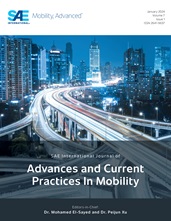A new and unique electric vehicle powertrain model based on bidirectional power flow for propel and regenerative brake power capture is developed and applied to production battery electric vehicles. The model is based on a Willans line model to relate power input from the battery and power output to tractive effort, with one set of parameters (marginal efficiency and an offset loss) for the bidirectional power flow through the powertrain. An electric accessory load is included for the propel, brake and idle phases of vehicle operation. In addition, regenerative brake energy capture is limited with a regen fraction (where the balance goes to friction braking), a power limit, and a low-speed cutoff limit. The purpose of the model is to predict energy consumption and range using only tractive effort based on EPA published road load and test mass (test car list data) and vehicle powertrain parameters derived from EPA reported unadjusted UDDS and HWFET energy consumption. The model can then be applied for other drive cycles, road grades, and parasitic accessory loads due to cabin or battery heating, air conditioning/cooling, or additional ADAS and autonomy loads (cameras and radar sensors, and compute and actuation hardware). The modeled battery net energy consumption is within 1% error for the UDDS and HWFET data used for fitting the powertrain parameters, as expected. The model is then applied to a vehicle that also has US06 data available, and predicts the US06 energy consumption to within 4%, validating the model parameterization method. The proposed modeling method is applied to a range of current and past EVs with very accurate results. A sensitivity study provides insight into the model parameters and similarities of electric powertrain efficiency among different classes of vehicles.
